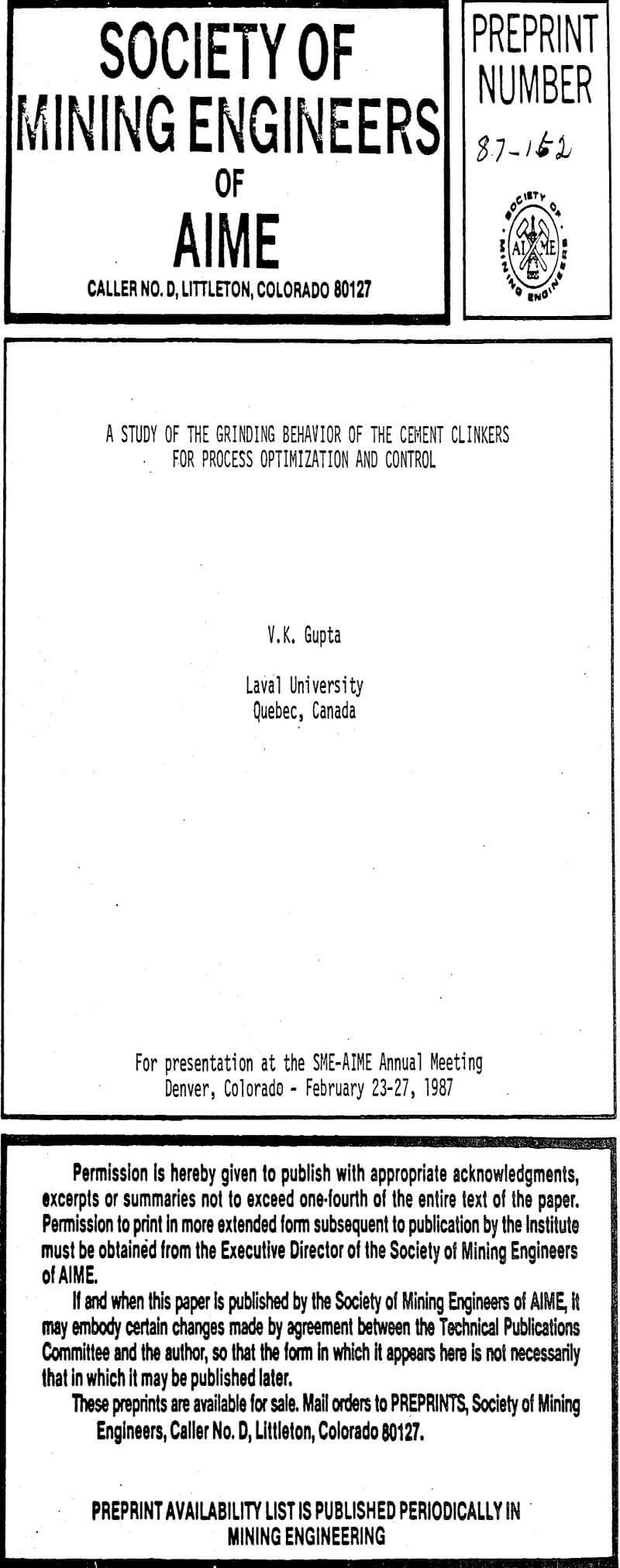Most Cement Clinkers grinding experiments were carried out in a 29.2 cm diameter laboratory ball mill which had a built-in wavy liner. The ball charge consisted of 1.27, 1.90 and 2.54 cm steel balls mixed in equal proportion by number. The ball load corresponded to 40% filling of the struck volume of the mill (denoted by: J = 0.4), and the particle load corresponded to 100% filling of the interstices of the ball-bed at rest (denoted by: U = 1.0).
Two additional mills of 40.6 and 61 cm diameter were used for obtaining data on the mill and ball diameter effects. In these tests mono-size ball charges were used. The diameter of the test balls ranged from 1.27 to 3.81 cm.
Pre-grinding of the clinker in the test ball mill for a few minutes before preparing the test samples. If the crushed clinker is used as such, as is the general practice, the initial grinding rates obtained are not representative of the particles produced in the ball mill under the test conditions.
Two types of feed charges were prepared: (a) having nearly 50% or more material in the coarsest size interval (denoted by: i=l), and (b) having natural size distribution similar to that of the contents of the production mill. Each feed charge was batch ground in the ball mill in three or four stages and the size distribution measured at the end of each stage. The size distribution data so obtained was used for the estimation of the various Si values.
The results obtained in the present study are important from the point of view of carrying out more meaningful circuit simulation studies and the scale-up design work. However, the best immediate application of some of these findings is made in the design of a new clinker grinding circuit shown in Fig. 6. As the grinding rate of the fine particles is not significantly affected by the mill speed, these particles are more economically ground in a separate mill run at a considerably lower speed (say, 55% critical). Variations in the clinker hardness can be taken care of by adjusting the fresh feed rate to the primary mill and/or by changing the mill speed (if variable speed drive is used). In either case, the feed rate to the secondary mill, and, hence, the production rate, can be maintained at the set maximum level by drawing fine clinker (classified product of the primary mill) from the storage bins, when needed. Thus, the expected benefits can be listed as: (i) reduction in the specific energy consumption (about 10%), (ii) higher and more uniform production rate, and (iii) increased flexibility in the control of the grinding circuit.
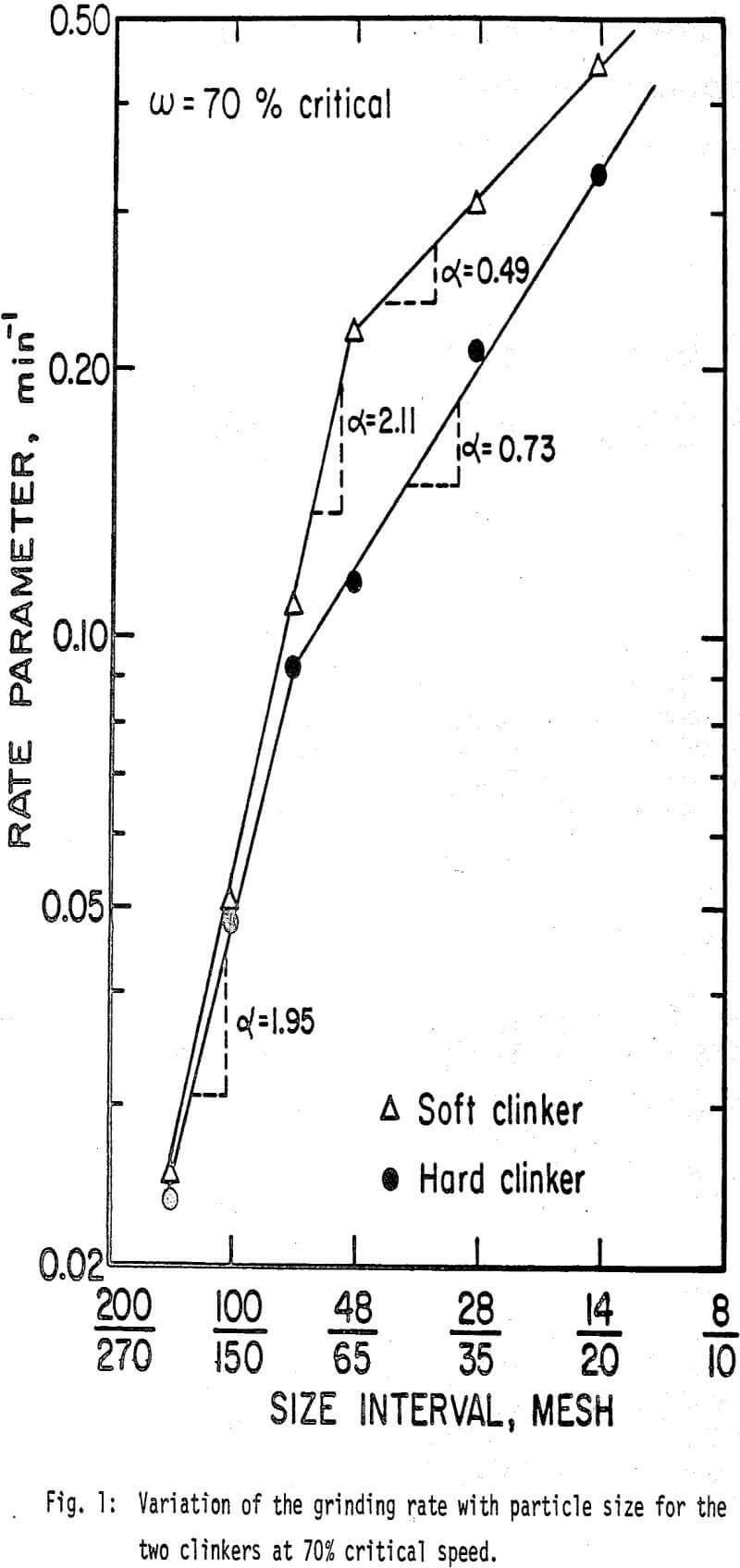 |
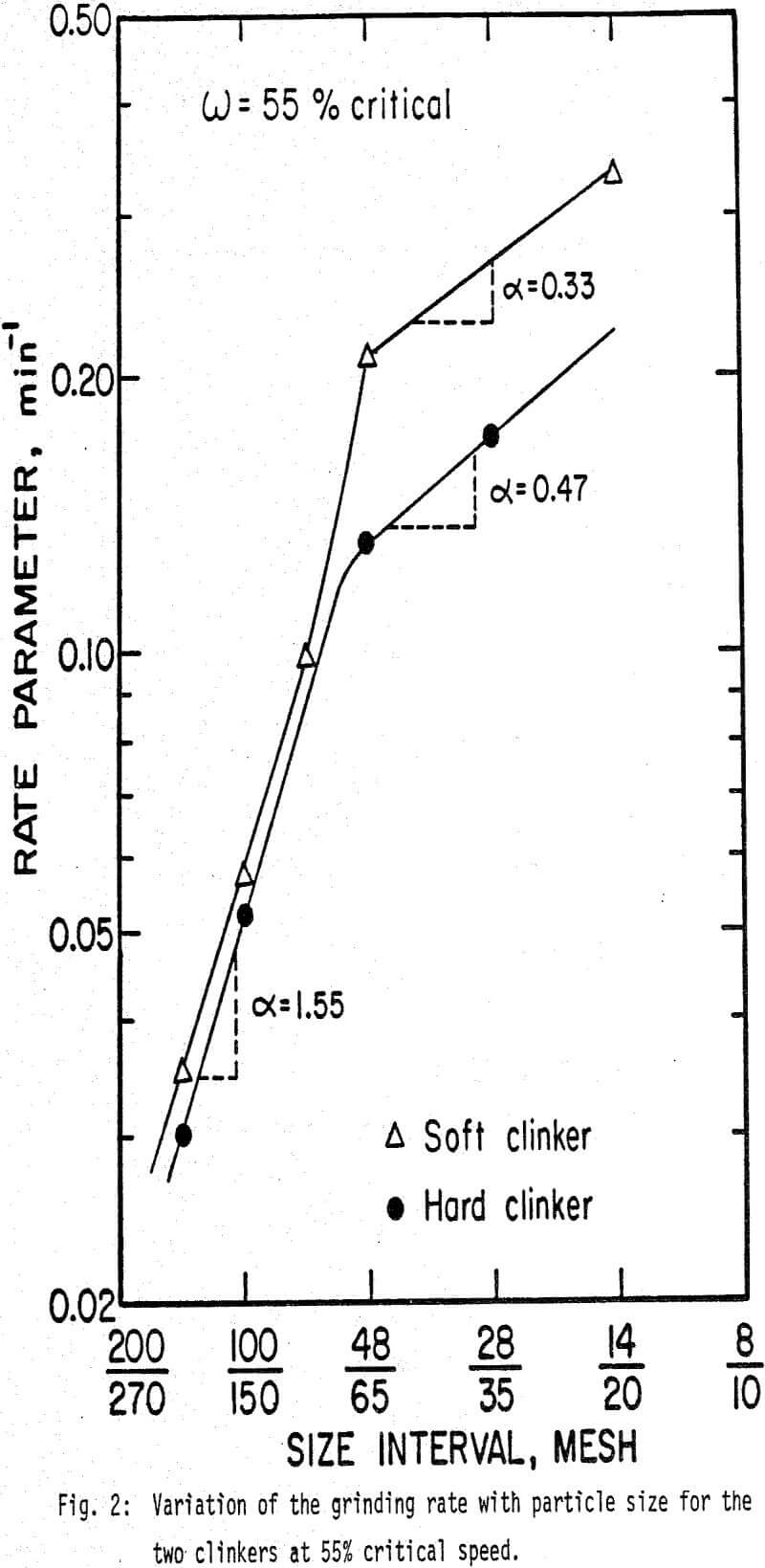 |
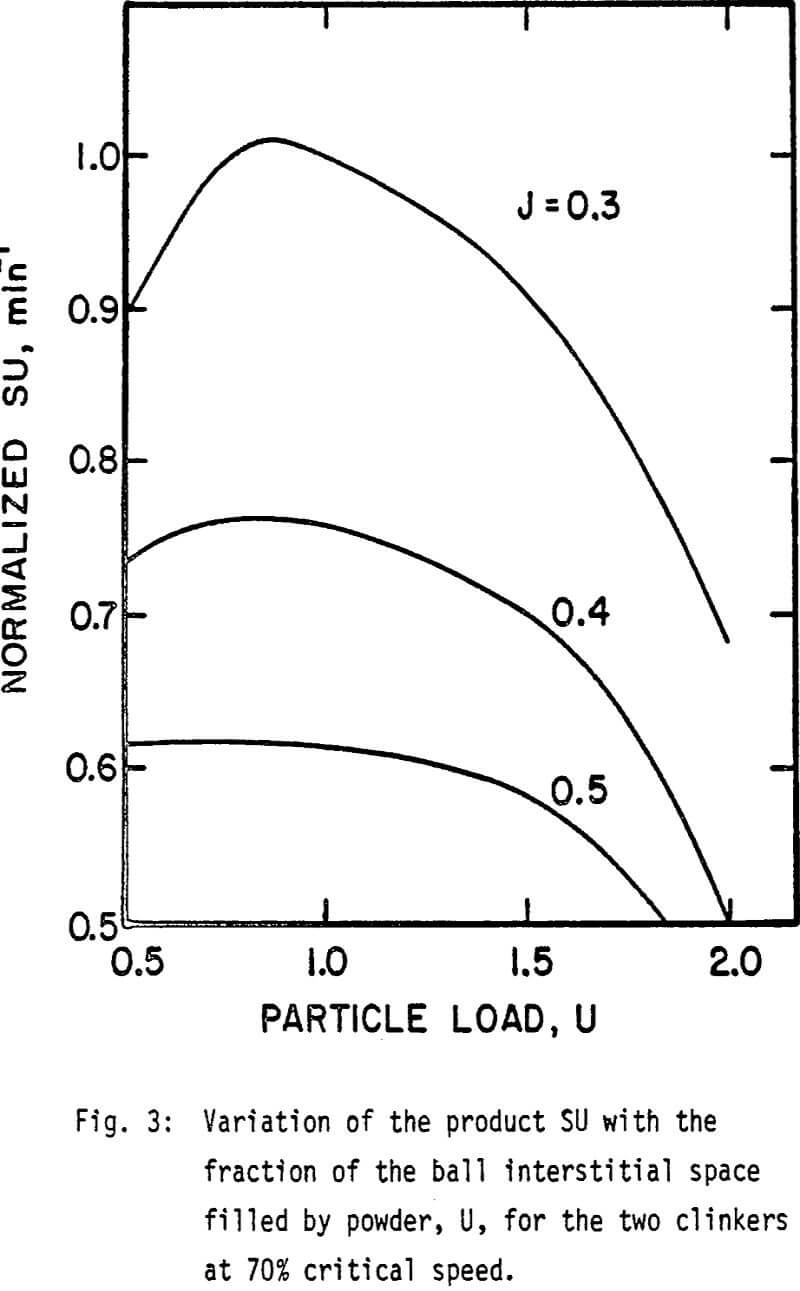 |
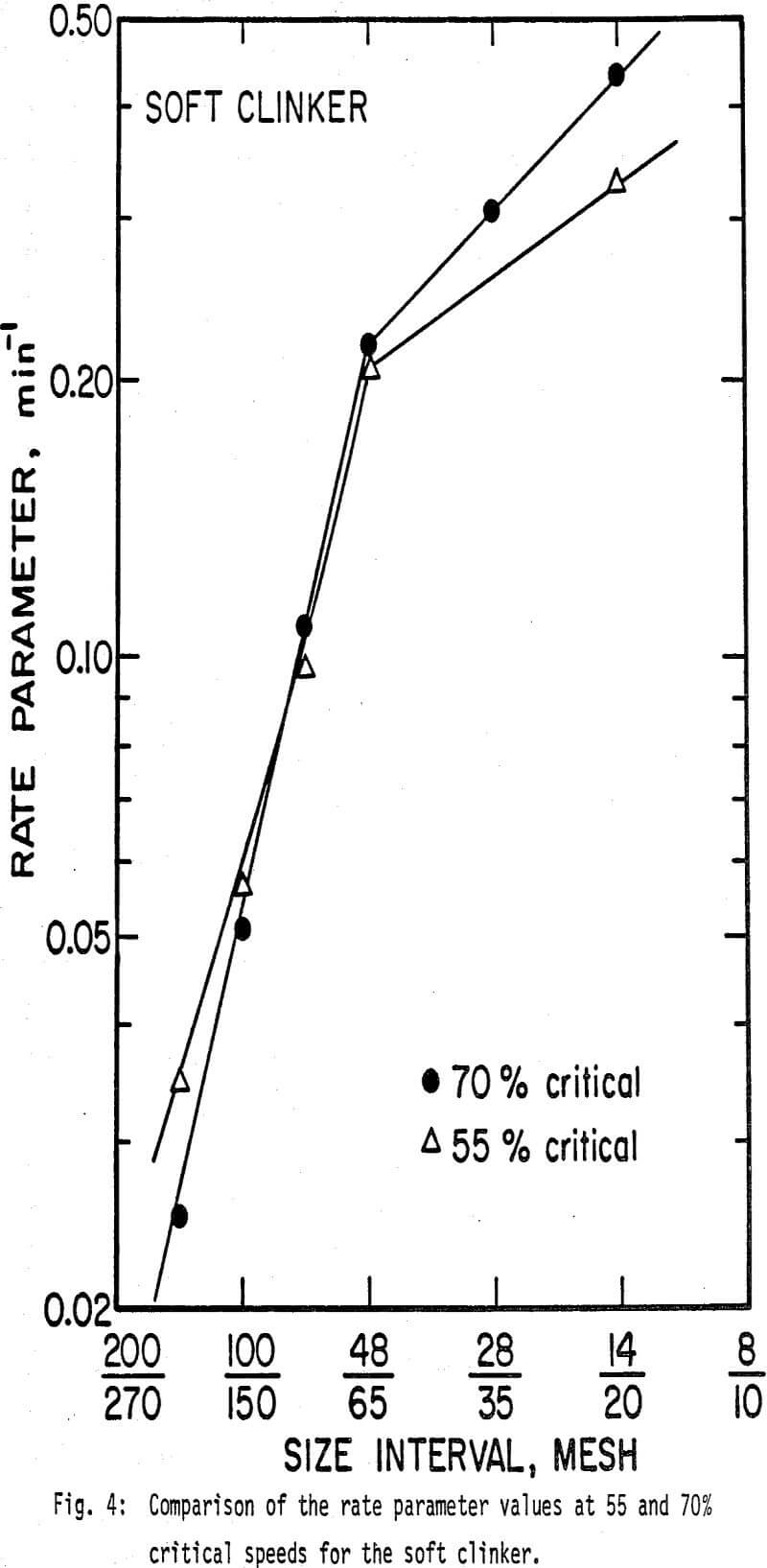 |
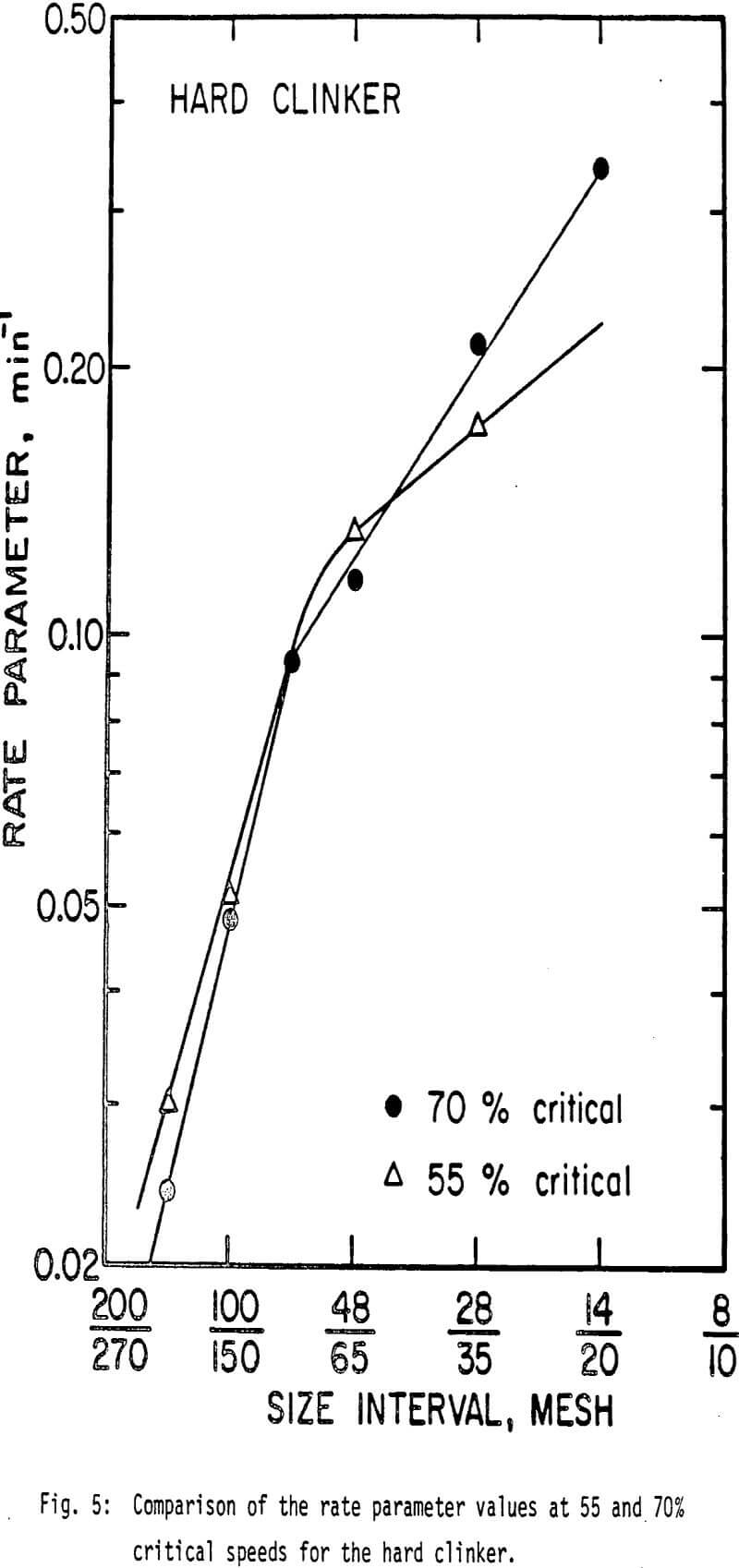 |
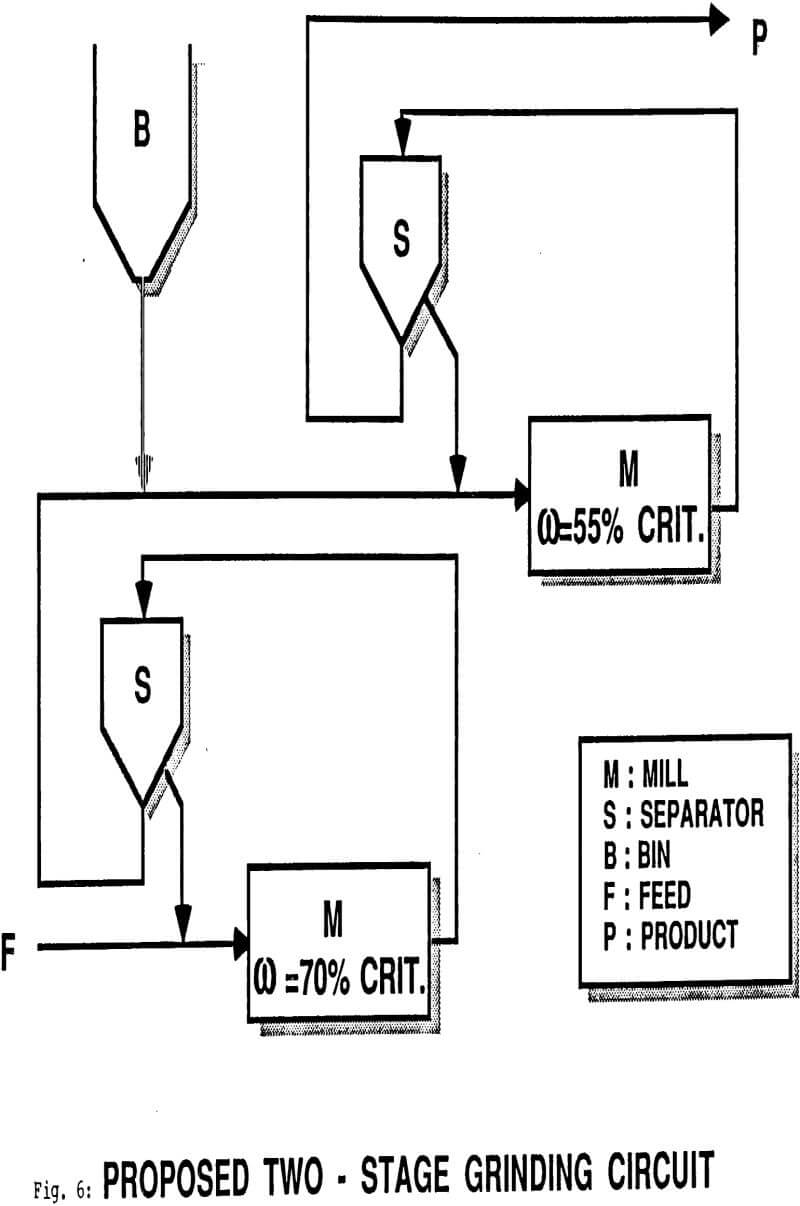 |
